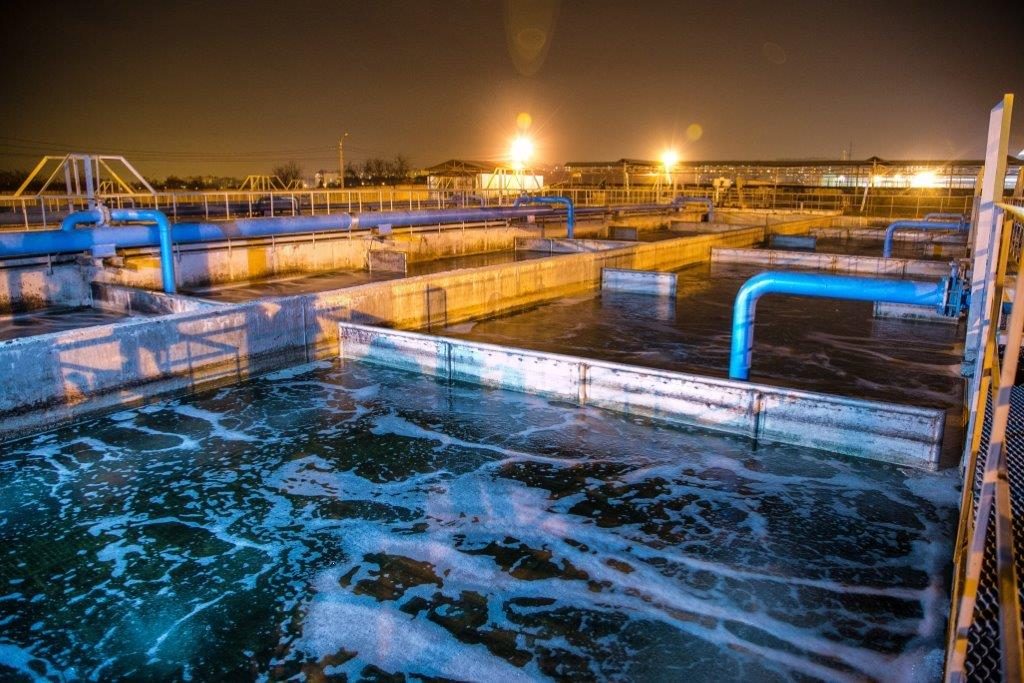Strategic Approaches to Enhance Waste Water Treatment Effectiveness and Decrease Environmental Effect
In the realm of waste water treatment, the quest for improved efficiency and reduced environmental impact is a perpetual challenge that demands tactical remedies. The integration of sophisticated therapy modern technologies, energy-efficient processes, resource recuperation techniques, improved nutrient elimination strategies, and smart surveillance and control systems represents a complex structure for attending to these pressing worries.
Advanced Treatment Technologies
Cutting-edge membrane layer purification systems have changed advanced wastewater treatment procedures, considerably improving the elimination of contaminants. These cutting-edge systems operate by requiring water via a semi-permeable membrane, properly separating pollutants from the water stream. The membrane's microscopic pores trap toxins such as microorganisms, viruses, and suspended solids, enabling just purified water to go through. This modern technology has shown to be very reliable in removing a wide variety of pollutants, consisting of drugs, hefty metals, and natural substances, which are frequently challenging to get rid of via traditional therapy approaches.
In addition, membrane layer filtering systems provide various advantages over standard therapy strategies. They need less space, create higher-quality effluent, and are extra immune to changes in influent water quality. In addition, these systems are very flexible and can be quickly integrated right into existing therapy plants or used as standalone devices for decentralized applications. As the need for tidy water remains to rise, the fostering of sophisticated membrane filtration technologies is essential to make certain efficient and lasting wastewater therapy practices.
Energy-Efficient Processes
The integration of energy-efficient procedures in wastewater therapy systems is essential for enhancing source usage and lowering operational costs. One essential technique to enhancing energy effectiveness in wastewater therapy is the use of innovative aeration systems, such as fine bubble diffusers or surface aerators, which can enhance oxygen transfer effectiveness and lower energy intake.
Furthermore, optimizing process control and automation through making use of sophisticated sensing units and monitoring systems can enhance total power efficiency by readjusting procedures in real-time based on actual demand and conditions. Carrying out power audits and routinely keeping track of energy performance indications are vital methods to determine areas for improvement and track energy-saving campaigns efficiently. Overall, the fostering of energy-efficient procedures in wastewater therapy not just benefits the environment yet additionally adds to long-term price savings and operational sustainability.
Source Healing Techniques
With a focus on enhancing source usage and sustainability in wastewater treatment systems, the implementation of source recovery techniques arises as a pivotal element in improving functional effectiveness. Source healing strategies in wastewater therapy include the recognition and removal of valuable sources from the waste stream, thus transforming what was when thought about waste into a beneficial possession. By implementing source recovery techniques such as nutrient elimination and recovery, power generation from organic matter, and the production of recyclable water, wastewater therapy plants can reduce ecological impact while optimizing effectiveness.

Boosted Nutrient Removal Techniques
Carrying out innovative nutrient removal techniques is essential for maximizing the effectiveness of wastewater therapy systems. Boosted nutrient elimination plays a vital role in minimizing the ecological influence of treated effluent discharged into water bodies. Among the crucial techniques made use of for improved nutrient removal is the procedure of biological nutrient elimination (BNR), which includes the elimination of nitrogen and phosphorus via biological procedures. This can be accomplished through making use of specialized microorganisms that can convert nitrogen substances into inert nitrogen gas via denitrification, and collect phosphorus within their cells through a procedure called boosted biological phosphorus elimination (EBPR)

In addition to BNR, advanced treatment methods such as membrane layer bioreactors (MBRs) and built wetlands can also be employed to boost nutrient elimination effectiveness. By integrating these sophisticated nutrient removal strategies into wastewater therapy industries, systems and municipalities can successfully reduce nutrient pollution and shield the atmosphere.
Smart Monitoring and Control Equipment
Making use of cutting-edge technology, the assimilation of wise monitoring and control systems changes the operational performance of wastewater therapy facilities. These systems include sophisticated sensors and information analytics to continually check crucial parameters such as pH degrees, turbidity, dissolved oxygen, and circulation prices in real-time. By collecting and evaluating this information, operators can acquire valuable understandings right into the efficiency of the therapy procedures, enabling aggressive modifications to enhance therapy efficiency.
Smart surveillance and control systems also sustain remote surveillance capabilities, enabling operators to gain access to real-time information and control features from off-site locations. This remote access enhances operational adaptability and responsiveness, enabling swift treatments in instance of system malfunctions or changes in influent top quality. The predictive maintenance capacities of these systems aid prevent devices failings and minimize downtime, ultimately boosting the total reliability of wastewater treatment operations.
Final Thought
To conclude, tactical techniques such as innovative therapy modern technologies, energy-efficient procedures, look these up source recovery strategies, enhanced nutrient removal techniques, and smart monitoring and control systems play a crucial function in enhancing wastewater treatment efficiency and reducing ecological impact. By implementing these techniques, wastewater treatment plants can boost their total performance, minimize energy consumption, recover valuable sources, and make certain conformity with ecological guidelines. These techniques are view it necessary for lasting and effective wastewater monitoring methods.

In conclusion, calculated approaches such as sophisticated therapy technologies, energy-efficient procedures, source recuperation methods, enhanced nutrient removal strategies, and smart surveillance and control systems play a crucial function in improving wastewater therapy efficiency and reducing ecological influence.